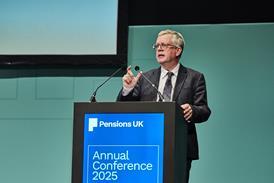For employers participating in group defined benefit pension plans, and in relation to plan surpluses, the new UK generally accepted accounting principles for 2015 will have a significant effect.
Key points
-
Balance sheets must show pension surplus/deficit for a group plan
-
In most cases, there is more flexibility to recognise surplus under FRS 101 or 102
-
Trustee power over surplus could require additional liability under FRS 101
Group plans are DB plans that have a number of participating companies under the common control of a parent company where the risks are shared between the participants.
If an employer was unable to identify its share of the underlying assets and liabilities on a consistent and reasonable basis, then in the past FRS 17 allowed it to account for the contributions to the plan on a defined contribution basis, with associated disclosures about the nature of the liability.
Any surplus or deficit in the plan was only recognised in the consolidated group accounts.
FRS 102 (like FRS 101 or full IFRS) requires the cost of a DB plan either to be recognised in the accounts for the entity that is legally responsible for the plan, or allocated between the participating companies in accordance with any contractual agreement or stated policy for charging the cost to the individual group entities.
This change could have significant implications for companies’ dividend payments and bank covenants.
It could also affect levies payable to the Pension Protection Fund – particularly in the first year the pension cost is reported on the balance sheet, as this will affect trend measures for the strength of the employer covenant as well as measures based on the current balance sheet.
This change could have significant implications for companies’ dividend payments and bank covenants. It could also affect levies payable to the Pension Protection Fund
Employers who currently account for a group plan on a DC basis will need to take care when deciding how to allocate any deficit between the participating employers and what counts as policy for this purpose.
Old: Balance sheet restriction under FRS 17
Where an employer already accounts for a plan on a DB basis, under FRS 17 the pension asset recognised on the balance sheet was restricted to the amount that the employer could recover either through reduced contributions or through refunds that were agreed by the trustees at the balance sheet date.
New: Balance sheet restriction under new standards
Under the new standards, the ability of an employer to recognise pension surplus on the balance sheet depends on the powers under the plan rules.
Provided the trustees do not have the unilateral power to wind up a plan or use surplus to augment members’ benefits, then the requirements of FRS 102 (and FRS 101/IFRS) are less restrictive than FRS 17.
There is no need for a refund to have been agreed at the balance sheet date. If an employer is theoretically able to finance the plan until the last benefit is paid, with any excess funds returned at this point, then it should be able to recognise a surplus.
If trustees have unilateral power over some or all of any surplus in a plan, the restriction under FRS 102 is effectively similar to FRS 17.
However, FRS 101 and full IFRS go further and require an additional liability to be recognised on the balance sheet if the minimum funding requirements are expected to give rise to or increase a surplus from which the employer will not be able to derive economic benefit.
Employers should assess the minimum funding requirements by allowing for:
-
the contribution amounts set out in the schedule of contributions for the period covered by the schedule, and
-
beyond that period, estimated contributions reflecting the projected funding surplus and the principles, both for setting the assumptions and for applying any surplus on the funding basis projected at that date, set out in the statement of funding principles.
Alastair Kennis is a corporate pensions consultant at Aon Hewitt






















